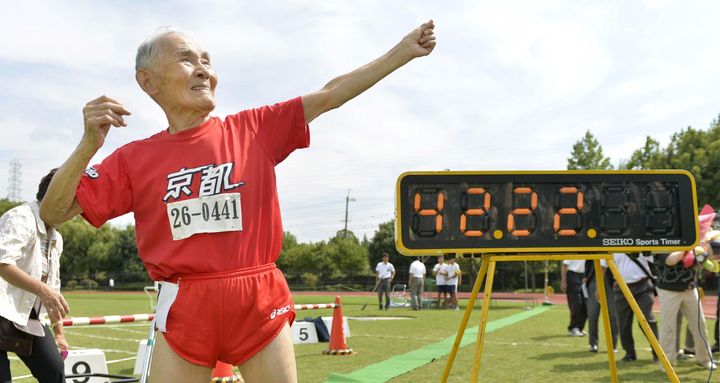Why Cycling is the Best Way to Lose Weight
Want to lose weight and keep it off? Here’s why the first fitness machine you ever owned is still the best
By Selene Yeager September 22, 2017
Having worked as a certified fitness trainer for 21 years, I’ve long since come to the conclusion that if you’re looking for the best exercise to shed a few pounds—and keep them off—nothing beats cycling. Over the years, I’ve seen clients shed half their size and heard from readers who have lost more than 100 pounds by adding cycling to their weight loss arsenal, which, yes, must include a healthy diet. (But you already knew that.)
So what makes cycling so special? In short, it makes you happy, says Jimmy Weber, of Enid, Oklahoma, who at 6’2” and 260 pounds is not a small rider, but is now 150 pounds lighter than his max weight of 410 pounds seven years ago. He initially shed weight through bariatric surgery and walking—a lot of walking. But walking his usual seven miles a day got boring and running was out of the question—“I’m too big and the impact would damage me more than benefit me,” he says. Although he has a membership to the Y, he says he has a hard time making himself go. The bike, however, is another story entirely.
Weber bought his first bike in more than 20 years in 2011 and has clocked more than 20,000 miles in the five years that followed, including numerous club and charity rides along the way.
“Bike riding is diverse when it comes to weight management,” he says. “You can go hard and fast and burn a lot of carbs, or slow and steady to burn a lot of fat. Plus I would not be as happy if I had to maintain my weight with diet alone.”
Weber speaks the truth. In case you need more convincing, here’s more great reasons why cycling rules for weight loss.
Because it’s not all about “exercise.”
The research is pretty conclusive: Most people who exercise only because they know they should, don’t—at least not for very long. Up to 80 percent of people who start exercising throw in the towel within a year. The novelty quickly wears off and they become bored and find things that are more fun to do. But riding a bike makes you feel like a kid. You can go places and explore, pedal through pretty scenery, and feel the fresh air wash over you. You’re not looking at the clock willing your obligatory 30 minutes to go by. You’re enjoying the ride. Oh, and getting some exercise.
It’s easy to HIIT it hard, no matter your size.
Exercise science shows that high intensity interval training (HIIT) is a fast way to boost your fitness, rev your metabolism, and stimulate human growth hormone, all of which help you ultimately fry more fat. There’s no better place to push those max intervals than on a bike because there’s zero impact, just effort. Just find a quiet stretch of road or path, especially if it’s on a bit of an incline and go. Push as hard as you can for 10 to 20 seconds, go easy for double that time (so 20 to 40), and repeat 8 times. Rest 4 or 5 minutes and do it again.
It’s gentle on the joints.
Cycling is so gentle on your joints it is often recommended as the exercise of choice for people with arthritis and other joint ailments. You need to be sure you have a proper bike fit, of course. But with the right fit and a good warmup, you can push the pace without stressing your hips and knees.
You’ll find friends to get fit with.
Research shows that social support—especially having a workout buddy or two—dramatically increases the likelihood that you’ll stick with your routine, and consistency is key to improving your fitness and shedding unwanted weight. Cycling is such a social sport that, like herds of buffalo and flocks of geese, there’s even a special name for a group of us: a peloton. It doesn’t take more than a quick search to find local cycling clubs where you can meet riders of your same fitness and ability to pedal with.
Even indoors can be really fun.
Most outdoor activities are pretty dreadful when you bring them inside (see: running on a treadmill). But indoor cycling apps like Zwift, Sufferfest, and TrainerRoad, as well as studio cycling classes actually make stationary cycling fun and entertaining. That means you’re less likely to fall out of routine when the weather turns bad.
What else can you do for 100 miles? Burning fat was never so much fun as spinning along and chitchatting with your riding buddies for a few hours. Just be smart and limit your snacking to about 200 calories an hour and you’ll create a pound-shedding calorie deficit in no time.
It can fit seamlessly into your life.
The beauty of bikes is that you can get exercise while you’re doing other things rather than having to reserve a chunk of your day to use them for “working out.” By riding your bike to the store, bike commuting to work, and riding instead of driving for other errands, you can slip in hours of activity every week doing the things you’d normally do anyway—and helping achieve a healthy weight while you’re at it.












 mx43
mx43



 Shutterstock.com
Shutterstock.com
